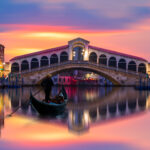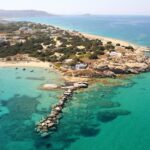Exotic West Coast of Greece : Messenia
Introduction
Welcome to the Messenia Travel Guide, where you can embark on an adventure along the captivating west coast of the Peloponnese peninsula. This picturesque region unveils stunning beaches with golden sands and crystal-clear waters, as well as endless olive groves and vineyards that embody the essence of the Greek countryside. As the turquoise waters of the Ionian Sea meet the alluring beauty of Messenia, a sense of magic fills the air. From the very first moment, you’ll be enchanted by the convenient charm of this area.
The coastline of Messenia is a truly blessed land, offering a historical prism through which its enchantment shines. Messenia is widely recognized as one of the most beautiful and promising destinations in Greece, with countless mysteries waiting to be discovered. While the summer in Greece often brings to mind the cool breezes of the Cyclades, Messenia reveals itself as a revelation of its own. Explore the fortified castles of Methoni and Koroni, immerse yourself in the olive-oil city of Kalamata, visit the picturesque village of Kardamyli, be amazed by the majestic waterfalls of Polylimnio, and follow the flowing waters of the Neda River as it carves a fairytale-like gorge. Discover the Mycenaean palace of Nestor and the serene isles of Sfaktiria. Messenia promises to leave you in awe.
Situated at the heart of the Messenian Gulf, Kalamata is a delightful symphony for travelers in search of authenticity, making it an irresistible reason to embark on this adventure. Meanwhile, the triangle formed by Pylos, Methoni, and Koroni awaits exploration. As you navigate the labyrinthine network of roads embraced by lush vegetation, Messenia proves to be an ideal destination for exploration by car. Pylos, resting peacefully beneath the protective presence of Niokastro fortress, exudes a true sense of aristocracy. However, the epitome of aristocratic beauty lies in Methoni, one of the seven cities bestowed upon Achilles by Agamemnon in an attempt to entice him back to the battle of Troy. Every road in this captivating town leads to the imaginary fortress with its majestic stone Bourtzi, standing proudly in the Navarino Gulf—the world-renowned Methoni Castle. The Navarino Bay presents some of the most breathtaking landscapes in Messenia. As you journey through the region, you’ll be immersed in its vast natural beauty, experiencing a captivating fairytale essence that defines Messenia.
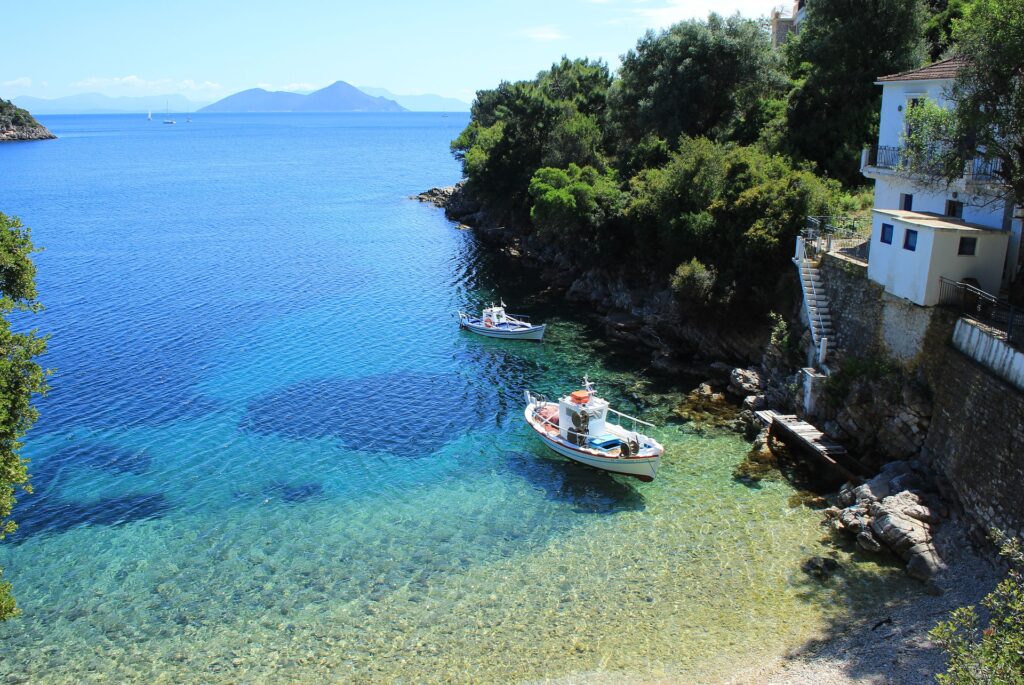
The enchanting series of fifteen lakes in Polylimnio seems to have sprung from the vibrant imagination of Renaissance painters, while the lagoon of Gialova, an important Greek sanctuary for migrating birds and the only European habitat of the African chameleon, will captivate nature enthusiasts. In Messenia, you can walk through fortified castles, discover Byzantine churches, explore fragments of the Mycenaean era, visit uninhabited islands and significant wetlands, descend waterfalls and gorges adorned with lush vegetation—truly, Messenia has it all.
The panoramic view from the fortress of Pylos, the mesmerizing turquoise waters of Voidokilia, the emerald lakes of Polylimnio, the awe-inspiring sunset from the Palace of Nestor, the majestic waterfalls of Neda, the heart-shaped isle of Sapienza, the stone village of Kardamyli, and the vibrant mosaics of Ancient Messene—a mesmerizing UNESCO World Heritage Site—will leave you breathless. Messenia truly embodies the essence of Greece like few other places can. Where the depths of the Mediterranean, such as the Calypso Deep, lie, mysteries abound. Tamed beauty and genuine allure will transport you to another era of Greece, offering an experience like no other.
Ancient Messene

The majestic town of Ancient Messene stands as one of the most captivating archaeological sites in Greece. It stretches across the southern slopes of Mt Ithome, once serving as the most formidable natural and man-made fortress in Messenia. Established in 369 BC by the Theban general Epaminondas, Ancient Messene became the capital of the independent Messenian state after a prolonged period of Spartan occupation. Impressive fortification walls with towers and gates have been preserved along a nearly ten-kilometer path, where numerous public and religious buildings can be found, many of which have been reconstructed to a significant extent.
Nestled in a fertile valley on a hillside and still undergoing archaeological excavations, Ancient Messene boasts a series of reconstructed grand structures, including the Ecclesiasterion, the Theatre, the Arsinoe Fountain, the Bouleuterion, the Agora, and the Stadium, as well as an extensive collection of funerary monuments. These monuments bear witness to the city’s size and its economic, political, religious, and social significance. In terms of size and preservation, Ancient Messene holds a significant place among the most important cities of antiquity. It is truly worth a visit, as it has the rare advantage of remaining largely unscathed by subsequent settlements, allowing visitors to experience an untouched Mediterranean natural setting par excellence.
Combining the mountainous grandeur of Delphi and the serene tranquility of Olympia, Ancient Messene is a must-visit destination, providing an insightful representation of ancient Greek life in a historical Greek city. The archaeological site of Ancient Messene is open to visitors from 08:00 to 15:00.
Bird Watching at the Lagoon of Gialova

The Djarova Lagoon, located at the southernmost tip of the Balkan Peninsula, is recognized as one of Europe’s most significant wetlands for migratory birds. Situated seven kilometers from Pyrrhus, between the Voidkiria beach and the settlement of Jaloba, the Jaloba Lagoon, also known as Divari, spans an area of 6,000 hectares with a maximum depth of 4 meters. It serves as a true bird paradise, as more than 270 species of birds have been observed here by the Greek partner of BirdLife International, the Ornithological Society of Greece. During their fall migration to Africa, thousands of birds make a final stop at the lagoons to rest before embarking on their arduous 3,000-kilometer journey across the Mediterranean and the Sahara. In the spring, these birds seek refuge in the wetlands of Europe’s southernmost tip to rest and replenish their energy.
The bird species that frequent the lagoon include ruff, gargany, grey and purple herons, sable heron, little egret, smooth ibis, curlew, golden plover, black-winged stilt, kingfisher, osprey, marsh harrier, great heron, little egret, flamingo, and imperial eagle, among others. Additionally, the lagoon is home to the endangered African chameleon, a rare and remarkable species. At the Observatory of the Ornithological Society on the Gialova Lagoon, visitors can learn about and observe this shallow brackish lake, which has been designated as a Natura 2000 site. Birdwatchers can explore nature trails to discover the diverse ecosystem of the lagoon. There is a one-kilometer trail that traverses eight major ecosystems within the Jaroba Lagoon. Along the route, informative signage describes the habitats, vegetation, and organisms that inhabit each ecosystem. For nature lovers, a 45-minute nature trail provides a beautiful experience. The best time to go birdwatching in the lagoon is from September to May, when the bird activity is at its peak.
Exploring Messenia
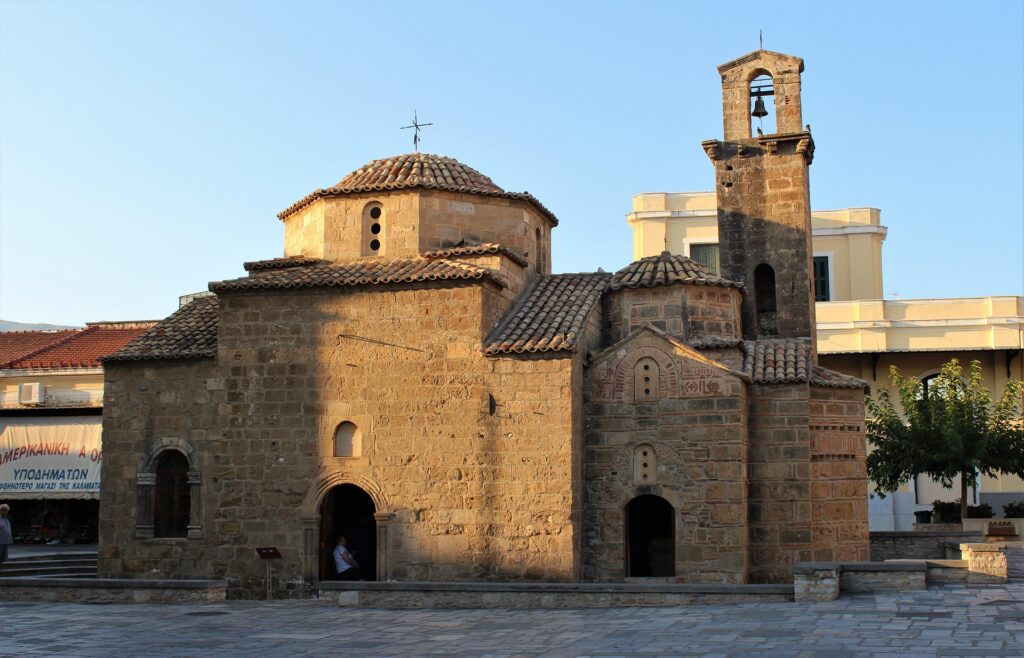
Situated in the heart of the Gulf of Messenia, Kalamata beckons as a soothing melody for authentic travelers and serves as the very purpose of this journey. While the town itself may not boast the grandeur of Greece’s most charming towns, it exudes a vibrant atmosphere akin to a bustling market, with a long seaside promenade that adds to its allure. The historic center stands as the focal point of Kalamata, inviting visitors to wander through its narrow alleyways and delve into the city’s rich history.
A visit to the legendary Isabeau Castle is a must. This castle, constructed by William Villehardouin in the 13th century, stands on the site of the ancient Farai Acropolis and has undergone expansions by the Venetians and Turks over the years. Today, it serves as a remarkable open-air venue for dance, music, and theater events, hosting the renowned International Dance Festival annually. Adjacent to the castle, visitors can explore Kalamata’s old town, taking in its charming streets and ambiance.
For those with an interest in archaeology, the Archaeological Museum of Messenia houses an intriguing collection of artifacts that provide insights into the region’s history. Additionally, the Kalamata Museum of History and Folklore, established in 1986, presents a captivating collection centered around the events of the 1821 Revolution. The Railway Park offers a delightful surprise, featuring locomotives and wagons from various centuries set amidst a green landscape.
Last but not least, the vibrant Navarinou seaside pedestrian street is a lively hub day and night, particularly during the summer months. It provides the perfect opportunity to immerse oneself in the local atmosphere, offering a memorable experience of Kalamata.
Beaches of Glossa and Voidokilia
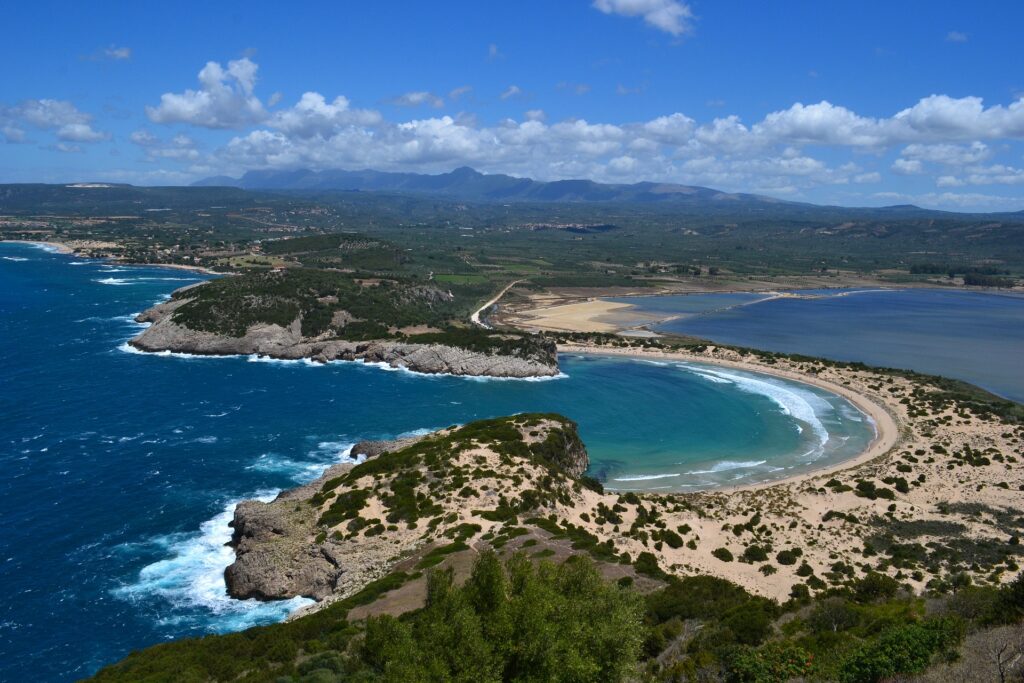
Voidokilia Beach, recognized as one of the most stunning beaches in Greece and listed among the top 10 beaches in the world by The New York Times, presents an idyllic setting for basking in the refreshing summer breeze. It is an absolute must-visit destination. Nestled amidst the majestic Jaloba Lagoon, this place will capture the hearts of nature enthusiasts. Resembling an ancient theater, Voidokilia Beach extends like an amphitheater within a perfectly round bay adorned with beautiful turquoise waters and fine golden sand. However, while exploring Voidokilia Beach, do not miss the opportunity to visit Glossa Beach, one of Messenia’s hidden gems. To reach it, head to the Tomb of Thros in Ancient Mycenae and follow the road on the right side of the hill. There, you will discover the splendid sandy beach of Glossa. It is a well-kept secret in Greece, and both of these beaches offer a unique beauty that cannot be replicated elsewhere in Messenia.
Moreover, I highly recommend embarking on a hike to the ruins of Paleokastro Castle, an ancient Pyrrhic acropolis dating back to the 13th century. From its vantage point, you can enjoy a breathtaking view that encompasses the northern entrance to Navarino Bay. While the castle is officially closed, adventurous travelers may still explore it with caution. The panorama from the top of Paleokastro is truly awe-inspiring, and it is well worth the journey to experience its magnificence.
Castle of Methoni

Situated on the southernmost tip of the western coast of the Peloponnese, Methoni Castle stands as one of Greece’s most enchanting castles, occupying a site that has been inhabited since the 7th century BC. Throughout its history, the fortress has witnessed various rulers and undergone significant transformations. Following the Treaty of Sapienza, Methoni Castle was utilized by the Byzantine Empire until 1204 AD, after which it came under the control of the Venetians. During the first Venetian occupation from 1209 to 1500, Methoni thrived as a financial center and bustling port, reaching its pinnacle of prosperity. It was during this period that the magnificent Methoni Castle was constructed, boasting massive ramparts and defensive structures that exemplify the distinctive features of medieval Venetian architecture.
In 1500, the conquest of Methoni Castle by Sultan Bayezid II initiated a turbulent chapter in its history, leading to a period of decline. In 1685, the Venetian forces under Francesco Morosini recaptured the Peloponnese; however, the Ottomans regained control in 1715, solidifying their rule until the start of the 19th century when the Greek War of Independence commenced. Methoni and its surrounding region remained under the rule of the Pashas of Western Messenia until its liberation in 1828 by the Moreas Expeditionary Force led by General Nicholas Maison.
Today, Methoni Castle is remarkably well-preserved, and the medieval town within its walls has managed to survive. Notable monuments within the castle grounds include the Byzantine church of Agia Sophia, the Turkish Bath, the Church of the Transfiguration (built in 1833), and the ruins of various structures. However, the most elaborate feature of Methoni Castle is the burzi, meaning “tower.” Constructed by the Ottomans between 1500 and 1573 on a rocky island south of the castle, the burzi fortified the region’s defense network and also served as a prison and torture chamber. Access to the burzi is granted through a stone bridge with 14 arches, built during the time of the French General Maison. The bridge remains intact, allowing visitors to appreciate the remarkable engineering involved in its construction. Crossing the bridge provides travelers with the opportunity to explore the magnificent Methoni Castle and unravel its mysteries. Methoni Castle is undeniably a sight of magical allure, showcasing the layers of history and architectural grandeur that have shaped its identity over the centuries.
Palace of Nestor
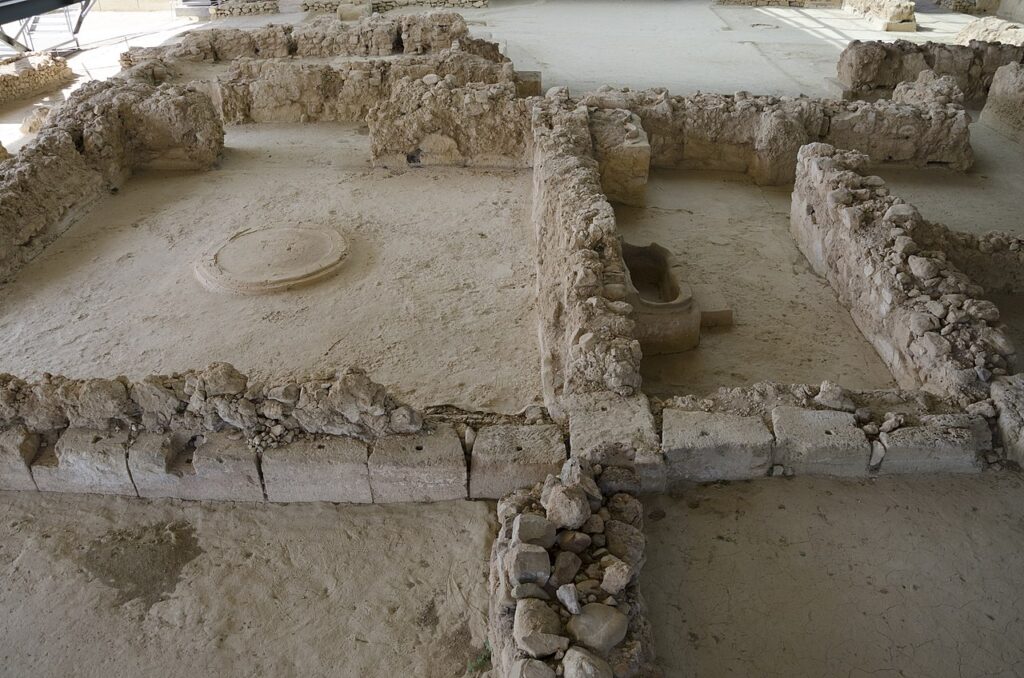
Nestor’s Palace is the best-preserved palace from Mycenaean Greece, renowned as the court of the legendary hero Nestor mentioned in Homer’s Odyssey. Nestor, known for his participation in the Argonautic expedition and his contribution of 90 ships to the Trojan War, ruled during the late Bronze Age civilization. The palace, constructed in the 13th century BC, was attributed to King Nestor, son of Nereus. Nestor is depicted by Homer as a wise and respected elder whose counsel was highly valued by the Achaeans.
Occupying an area of 4 acres, the palace consists of three main wings divided into four main buildings and features 105 rooms. Key structures within Nestor’s Palace include the rectangular “throne room” with a circular hearth, the bathroom containing a ceramic bathtub, and numerous storage vessels. Notably, the palace walls were adorned with splendid murals. The discovery of over 1,000 Linear B clay tablets in the palace provides evidence of its function as the financial, administrative, political, and religious center of Mycenaean Messenia.
After a great fire in the late 13th century BC, Nestor’s palace was largely abandoned or suffered near-complete destruction in the early 12th century BC, never to be rebuilt. In 1888, Heinrich Schliemann conducted the initial excavations to locate the palace, but he was unable to find it. The major breakthrough came in 1939 when Konstantinos Kourouniotis and Carl Blegen initiated extensive excavations that brought the first findings of the palace to light. The excavation revealed over a thousand tablets with Linear B texts from Nestor’s Palace, which were deciphered in 1952 by architect Michael Ventris and linguist John Chadwick. This breakthrough provided historians with crucial insights into the daily life, economic activities, and trade of prehistoric Pylos.
In the vicinity, two royal vaulted tombs were also discovered, one of which was restored in 1957 by the Archaeological Service. Numerous archaeological artifacts from the Palace of Nestor are housed at the Archaeological Museum of Chora, the Archaeological Museum of Messenia, and the National Archaeological Museum of Athens. The archaeological site of Nestor’s Palace opened to the public on June 12, 2016, following a significant restoration project that spanned three years and involved the participation of the University of Cincinnati from the USA. The site is open to visitors from 08:00 to 15:00.
Waterfalls of Polylimnio
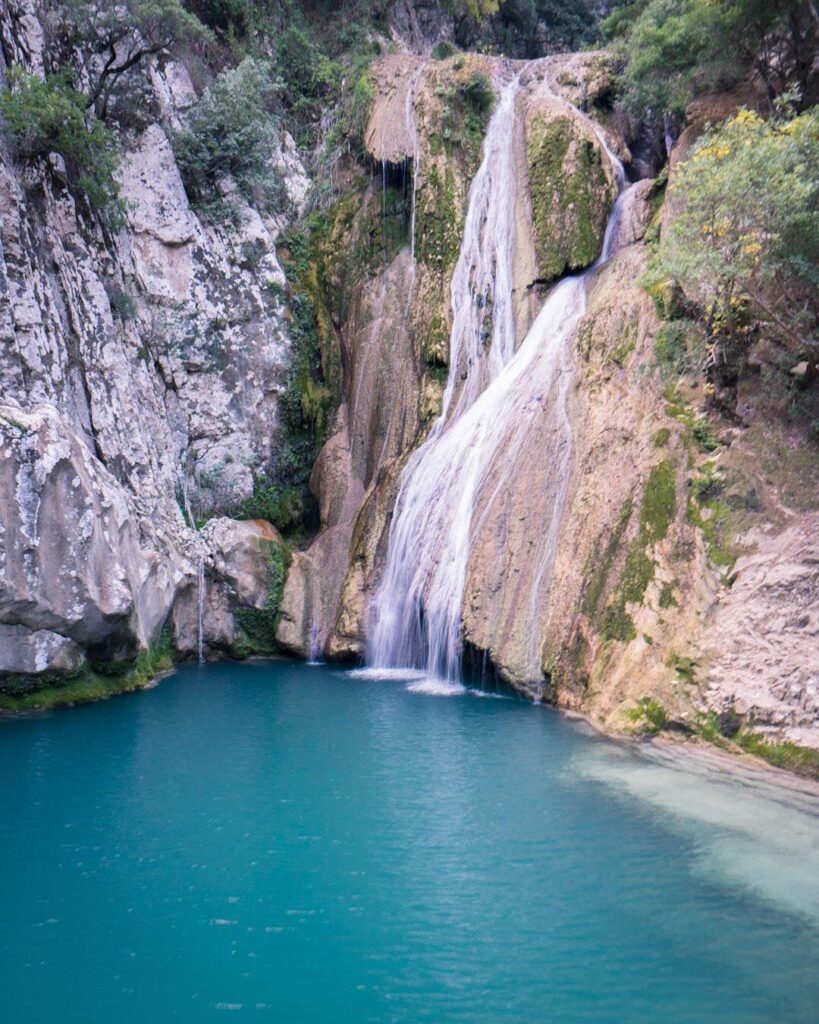
Polylimnio Waterfall is a hidden gem in Messenia, offering a magical experience for those who venture into this corner of Greece. As you wander through the enchanting forest, you’ll uncover the mysteries of this captivating destination. The landscape is adorned with vibrant greenery, carved paths, and charming wooden bridges, leading you to discover hidden waterfalls and emerald lakes. Polylimnio is a true natural wonder, boasting 15 pristine lakes and majestic waterfalls, with the tallest waterfall, Cadi Falls, reaching an impressive height of 20 meters. Cuddy Lake is particularly ideal for diving, although be prepared for the cold water, even during summer months.
Among the first notable lakes you’ll encounter is Lake Italia, followed by Lake Cadura. From this point, you’ll be treated to a spectacular view of all the lakes and waterfalls, creating a truly awe-inspiring sight. Accessing Polylimnio is relatively easy by following the road from Kalamata through the village of Chalabgi to Piros. Locals or signage along the way can provide further guidance, and both parking lots are easily identifiable. Once you leave your vehicle, you’ll embark on a walk along dirt roads until you reach a narrow pathway leading to the Polylimnio site. The pathway through the canyon is made easier to traverse with the help of stilts, but it’s important to wear rubber-soled shoes for better grip as the surfaces can be slippery.
Before setting off, remember to wear a hat, pack your bathing suit, and bring snacks and bottled water. The best time to visit Polylimnio is during the summer, allowing you to take refreshing dives into the cool waters from the rocks. However, be aware of the inhabitants of Polylimnio, such as large crabs, frogs, and small water snakes. It’s a perfect opportunity to immerse yourself in the wonders of nature and embark on a memorable exploration of this remarkable site.
Isle of Sapienza
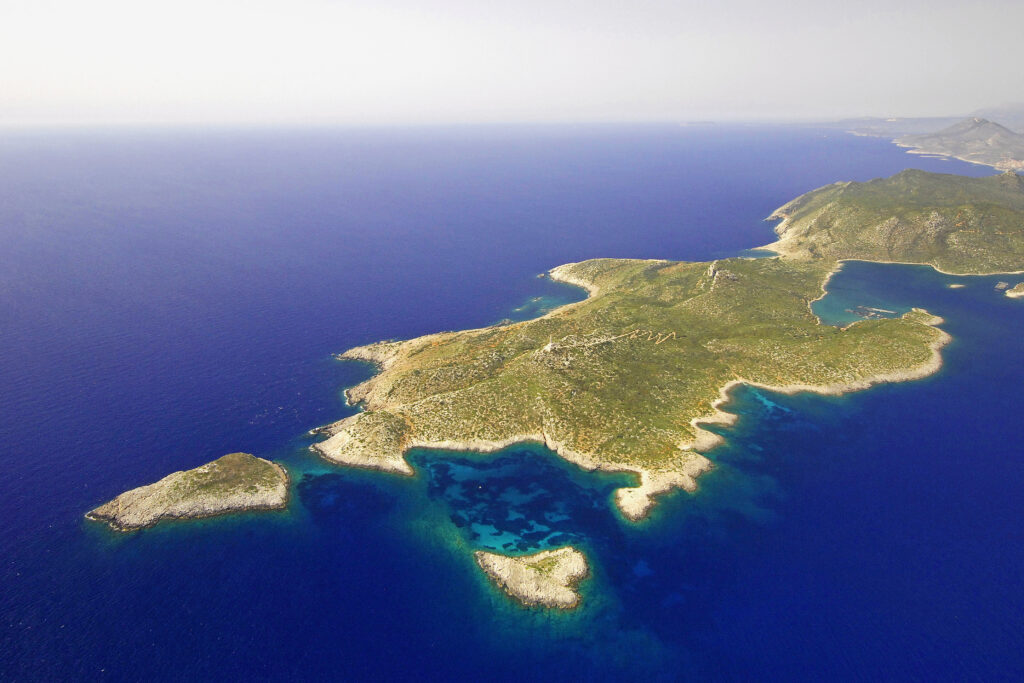
Nestled just off the southern coast of the Peloponnese, the captivating island of Sapienza beckons with its heart-shaped allure. As one of Messenia’s best-kept secrets, this untouched gem remains untouched by human activity, allowing nature to flourish undisturbed. With 98% of the island dedicated to preserving its natural splendor, Sapienza is a sanctuary for an array of flora and fauna. The landscape is adorned with lush green slopes, where low vegetation thrives, while the Mediterranean’s enchanting arbutus forest graces the island’s northern center. Towering strawberry trees, reaching heights exceeding ten meters, and bountiful blueberries, akin to petite apples, contribute to the island’s remarkable charm. Recognized as a natural treasure in 1986, this forest provides a haven for exploration and discovery.
At the heart of the island lies Spartolaka, a clearing nestled amidst the forests, offering breathtaking panoramic views. A unique landscape emerges, with clay-covered grounds and traces of fossilized pollen, creating a mesmerizing sight. Venturing into the wild and unspoiled forests of Sapienza, one can’t help but feel a sense of entering a hidden jungle, as these pristine wonders remain concealed from sea level.
Sapienza’s allure extends beneath the surface, captivating avid divers with the opportunity to explore ancient shipwrecks that lie along the island’s shores. Resting along the primary sea route between Italy and the Middle East, these wrecks hold historical significance and offer a glimpse into the island’s rich maritime heritage. The underwater beauty that envelops Sapienza is irresistible, and plans are underway to establish an underwater park, providing a platform to showcase the island’s aquatic treasures.
Perched on the island, a notable landmark stands—the important lighthouse constructed by British settlers in 1885. Although the lighthouse is no longer operational, it is powered by solar-powered beehives, its light casting a radiant glow visible up to 28 nautical miles away. Embark on a journey along the path starting from the natural port of Porto Longo, and ascend to the lighthouse’s vantage point, where a magnificent view of the surrounding landscape awaits.
Sapienza presents a remarkable alternative destination within Messenia, offering thrilling opportunities for exploration and hiking. Step aboard one of the charming caiques departing from Methoni and Finikounda, and savor the delights of a journey to Sapienza. Be sure to ask the captain to make a stop at Ammos beach, where you can indulge in a refreshing dip in the crystalline waters. Sapienza beckons, promising a remarkable escape and a chance to immerse yourself in the captivating embrace of nature and history.
River Rafting at Neda River

Nestled amidst the slopes of Mount Lykaion, the awe-inspiring Neda River originates, offering a captivating journey for travelers. Renowned as the only river with a female name, Neda is a testament to the wild beauty of Greek nature. The Neda Canyon, a rare and relatively unexplored corner of the country, unfolds with ever-changing landscapes, lush vegetation, colossal river stones, and vibrant green waters, captivating adventurers with its delightful challenges. Along the river’s course, the journey is punctuated by breathtaking waterfalls that cascade into crystalline lakes.
It is fascinating to witness the Neda River’s thirty-two-kilometer path, as its waters wind their way through natural riches, culminating in their arrival at the Ionian Sea. According to mythology, Neda was the water nymph who nurtured and protected the infant Zeus from the devouring hands of Kronos. Transformed into a river, Neda’s flowing tresses transformed into beautiful waterfalls, adorning the gorge with their splendor. Undoubtedly, the Neda Gorge stands as a remarkable testament to the captivating landscape of Messenia.
The Neda River remains a hidden gem and one of the most thrilling rivers in Greece. Whether you are an avid enthusiast of extreme sports or simply seeking an unforgettable adventure, immersing yourself in canyoning, hiking, rafting, or trekking through this magnificent canyon is an essential experience. The exploration begins in ancient Fygalia, where the route follows a creek that leads to an untouched natural environment. Amidst the untamed wilderness, avid travelers will trek through wild vegetation, traverse narrow rocky passages, and encounter impressive pools, unveiling a hidden paradise of unparalleled beauty.
As you reach the vicinity of the village of Neda, an enchanting portrait of nature unravels before your eyes. Crystal-clear waterfalls cascade into azure ponds, merging with the main river, as it swiftly follows its course towards the sea. The Neda River stands as a true jewel of Greek nature, as this region has managed to preserve its virgin allure, untouched by tourist development. During the summer months, local clubs and naturalist groups organize trips to the Neda Gorge, allowing visitors to immerse themselves in the green landscapes, turquoise waters, and majestic cliffs, creating an unforgettable passage through this awe-inspiring gorge.
Town of Pylos
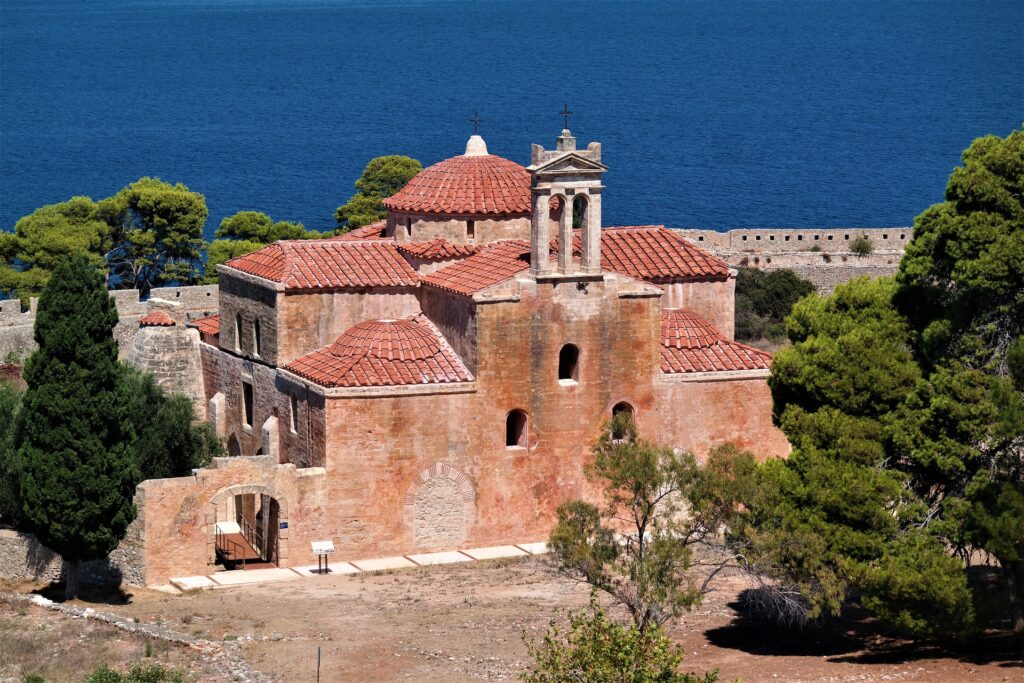
Nestled on the enchanting southwest coast of the Peloponnese peninsula, Pylos is a captivating coastal town that enthralls visitors with its breathtaking location in the picturesque Messinian Lands, overlooking the vast and awe-inspiring Bay of Navarino. With a heritage dating back to the Mycenaean era and culminating in its eventual liberation through a legendary battle, Pylos proudly carries the legacy of its ancient counterpart, the Homeric Pylos of Nestor. Anchored by the expansive Pylos Port, ranked among the world’s largest and safest harbors, and graced by the natural breakwater of Sfaktiria Island in Navarino Bay, the town offers a glimpse into its storied past.
A must-visit landmark in Pylos is the magnificent Niokastro Castle, one of Greece’s finest-preserved fortresses. Nestled amidst verdant pine trees, the castle showcases significant historical artifacts and offers a panoramic view of the entire town of Pylos from its grounds. Within the castle’s walls, the remarkable Church of the Transfiguration of the Savior awaits, once a mosque during the Ottoman era. Dating back to 1573, this church played a pivotal role in the renowned Battle of Navarino. Pylos serenely unfolds beneath the watchful gaze of Niokastro, exuding the charm of a quaint island village. The town’s distinctive architectural layout, resembling an amphitheater, adds to its visual allure.
Indulge in the pleasure of sipping a refreshing coffee in the shade of trees at the traditional cafes adorning the central square, Trion Navarhon, where the imposing monument commemorating the three admirals and two cannons from the naval battle of Navarino proudly stands. Explore the Archaeological Museum of Pylos, home to a captivating collection of artifacts unearthed in the Pylos region, and immerse yourself in the wonders of the Museum of Underwater Antiquities, which showcases precious archaeological treasures recovered from shipwrecks in the Peloponnese. Another notable attraction is the meticulously renovated two-story house of Olympic champion Kostis Tsiklitiras, now housing the remarkable collection of philhellene René Puaux. Before bidding farewell, embark on an enchanting boat trip to the idyllic island of Sfaktiria and savor the beauty of Navagio Bay.
Pylos beckons with its rich tapestry of history, captivating scenery, and cultural treasures, offering visitors a captivating glimpse into the essence of this coastal town in Messenia.




